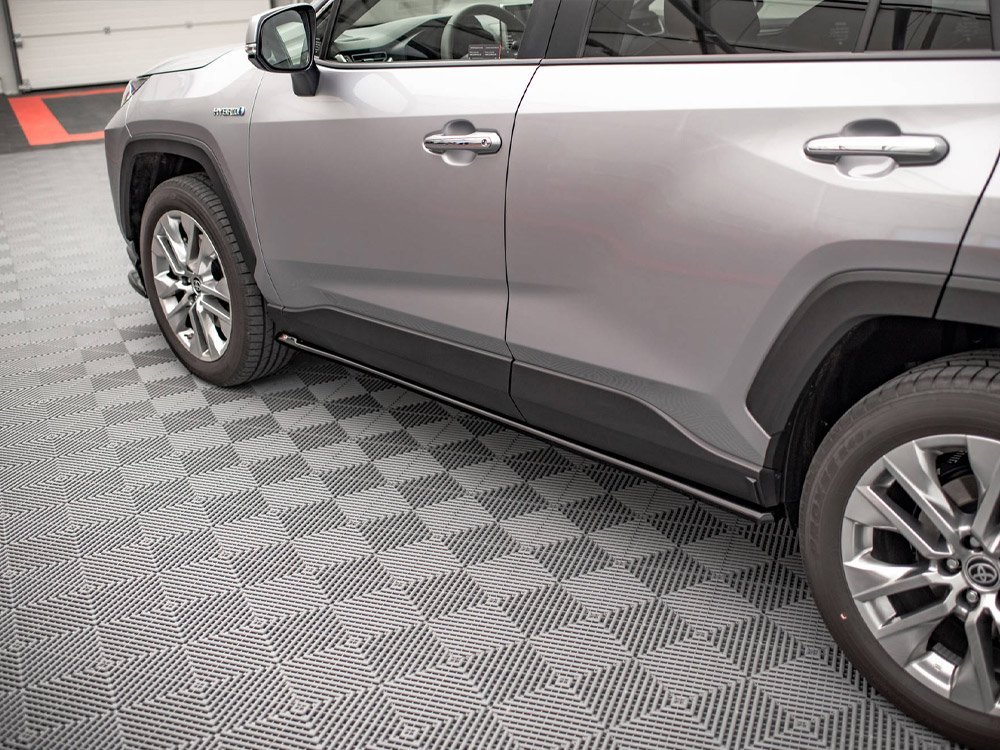How to Read and Set the Tire Pressure on a Toyota RAV4.
Mastering the art of read and set the tire pressure on a Toyota RAV4 is essential for ensuring safety, maximizing fuel efficiency, and prolonging the lifespan of your vehicle’s tires.
In this comprehensive guide, we’ll delve into the specifics of this process, tailored for 2018 models and 2021 variants. Understanding your RAV4’s Tire Pressure Monitoring System (TPMS) is key to navigating the roads with confidence and peace of mind.
Introduction to TPMS
TPMS is a safety feature mandated by law in many countries, including the United States, that alerts drivers when tire pressure falls below a certain threshold. There are two main types of TPMS: f
direct and indirect. Direct TPMS uses sensors within each tire to monitor pressure levels. At the same time, indirect TPMS relies on the vehicle’s anti-lock braking system (ABS) to detect changes in tire rotation speed, indicating low tire pressure.
Toyota RAV4 models typically come equipped with direct TPMS, providing real-time monitoring of tire pressure and displaying the information on the dashboard.
Understanding Tire Pressure Specifications
Before you can effectively read and set tire pressure on your RAV4, you must know where to find the recommended tire pressure specifications. This information is typically on a placard affixed to the driver’s side door frame or inside the glove compartment. It’s important to note that tire pressure recommendations may vary depending on the model year of your RAV4.
For instance, the 2018 Toyota Rav4 tire pressure display may differ slightly from that of a 2021 Rav4 tire pressure display. Be sure to consult your owner’s manual or the placard for accurate information specific to your vehicle.
Checking Tire Pressure on a Toyota Rav4
Ensuring optimal tire pressure is a fundamental aspect of vehicle maintenance, and to achieve accurate readings, it’s imperative to conduct the check when the tires are cold, ideally before embarking on your journey.
Here’s a comprehensive step-by-step procedure for checking tire pressure:
- Prepare Your Equipment: Begin by gathering the necessary tools for the task at hand. You’ll require a reliable tire pressure gauge, readily available at most automotive supply stores.
- Valve Cap Removal: Remove the valve cap from the tire’s stem before measuring the tire pressure. This step allows for unimpeded access to the valve, ensuring an accurate reading.
- Gauge Application: With the valve cap removed, firmly press the tire pressure gauge onto the valve stem. Ensure a secure connection to prevent air leakage during measurement.
- Obtain Pressure Reading: Once the gauge is securely in place, take note of the pressure reading displayed on the indicator. This reading is typically expressed in PSI (pounds per square inch), indicating the current pressure within the tire.
- Repeat for Each Tire: If applicable, it’s essential to perform the same procedure for all four tires, including the spare tire. Consistency is critical to obtaining accurate and reliable tire pressure readings across all vehicle tires.
By adhering to this meticulous process, you can effectively assess and maintain optimal tire pressure levels, promoting safety, fuel efficiency, and overall vehicle performance. Regular monitoring and adjusting tire pressure according to manufacturer recommendations are essential for responsible vehicle ownership.
DISPLAYING THE TIRE PRESSURE
The Toyota RAV4 offers the convenience of displaying tire pressure information through the Toyota app or on the multi-information display, depending on factors such as model year, trim level, and country of operation.
This feature’s availability varies significantly based on these criteria. For instance, in my experience, my 2021 RAV4 LE could not display tire pressure on the multi-information display but allowed access to this information through the Toyota app.
Conversely, when I rented a 2022 RAV4 Hybrid Limited, tire pressure was readily visible on the display and via the Toyota app. Furthermore, differences exist across countries, as exemplified by many Canadian RAV4s lacking a tire pressure monitoring system (TPMS) altogether, thus precluding the ability to monitor tire pressure.
USING THE MULTI-INFORMATION DISPLAY
Using the arrow keypad on the steering wheel, drivers can navigate through various screens on the multi-information display. Among these screens, one option enables the display of tire pressure readings for each wheel, provided that the vehicle is equipped with this functionality.
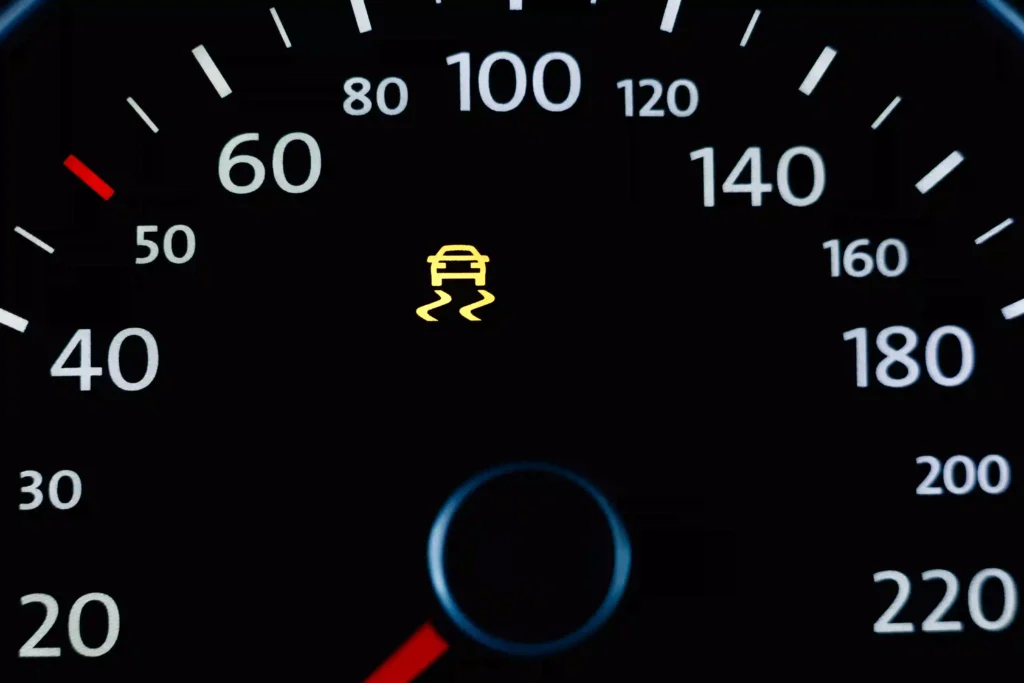
Here’s a visual representation of how it appears:
Unfortunately, we’ve yet to confirm precisely which trim levels of the 2024 Toyota Land Cruiser or 2024 Toyota Camry support the direct display of tire pressures on the multi-information display. It’s somewhat surprising that this feature isn’t universally included as a default across all models in Toyota’s lineup, including these popular vehicles.
USING THE TOYOTA APP
Utilizing the Toyota app provides a convenient means of staying connected with your vehicle, offering a range of functionalities at your fingertips. With a complimentary trial, you can access features like viewing your tire pressure through Toyota’s Connected Services within the app.
Please note: To unlock this feature, you’ll require a Service Connect free trial or an active subscription. For comprehensive insights into Service Connect, refer to the informative video below.
Once you’ve secured Service Connect, here’s a straightforward guide to setting it up:
- Download the Toyota app onto your mobile device.
- Upon opening the app, tap “Register” to create a new account or log in using your existing credentials.
- Input your personal identification details and tap “Sign Up” to receive an activation code via email.
- Retrieve the activation code from your email and use it to verify your account.
- Utilize your device’s camera to scan the Vehicle Identification Number (VIN) within the app or enter it manually.
- Tap on “Add Vehicle” and confirm the details of your RAV4 along with the associated dealership.
- Review the Connected Services Trials and tap “Continue” to proceed.
- Review the Connected Service Data Handling Requirements and agree to continue.
- Review the Service Connect Communication and consent to continue.
- Review the Auto Insurance Designed for you and agree to proceed.
- Tap “Finish Setup” to finalize the setup process.
Once the app is configured with your vehicle’s specifics, you can effortlessly access tailored information about your RAV4, including crucial details like tire pressure.
ALTERNATIVE METHODS
Not everyone prefers to digitize their automotive experience. If you lean towards a more traditional approach to car care, alternative methods that don’t rely on a mobile app are available. Here are a couple of options that I find compelling:
1. Use an Air Pressure Gauge
For those who prefer a hands-on approach, an air pressure gauge is a straightforward method to read your car’s tire pressure accurately.
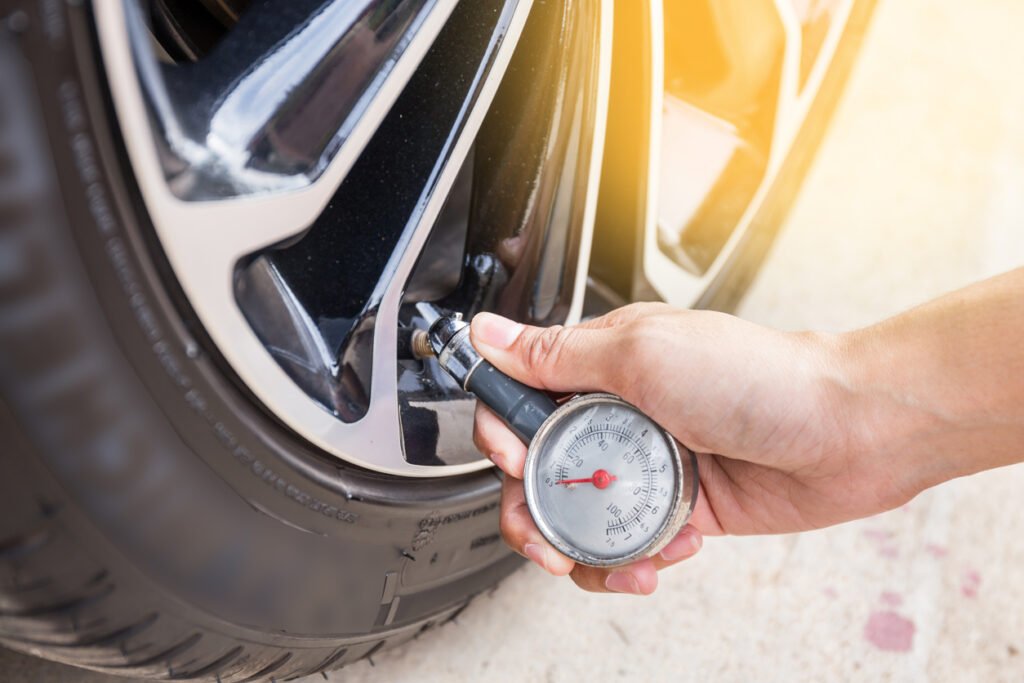
Regularly monitoring your tire’s air pressure is essential for maintenance, particularly with fluctuating outdoor temperatures. To ensure optimal performance and safety, it’s advisable to check tire pressure every few months, especially before embarking on long trips or carrying heavy loads.
For the most precise reading, check your tire pressure when the tires are cold. Cold temperatures can cause a temporary decrease in tire pressure due to the air inside condensing, but driving will subsequently heat the tires and elevate the pressure.
I recommend keeping the AstroAI digital tire pressure gauge in your glove box. It’s reliable, user-friendly, and conveniently compact for storage in your SUV.
2. Wait for the Tire Pressure Light
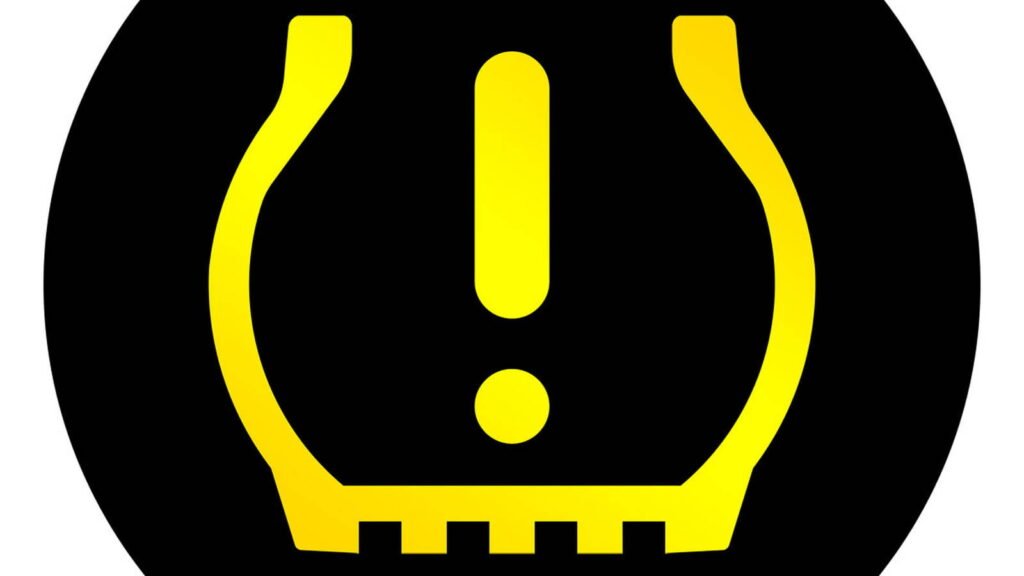
Alternatively, if you prefer not to use a mobile app or invest in an air pressure gauge, you can rely on the Toyota RAV4’s low air pressure warning light. This indicator is a dependable alert system, though it may take some time to activate. The light will only illuminate when the tire pressure drops to critically low levels.
It’s important to note that the warning light typically displays a tire symbol rather than providing specific pressure readings. Keep an eye out for this symbol on your dashboard.
In certain instances, the TPMS warning light may illuminate during colder weather, which doesn’t necessarily indicate a tire leak. Monitor the situation as you drive, but if the issue persists, it’s advisable to address it promptly to ensure optimal tire performance and safety.
Finding the Correct Pressure
Before adjusting your tire pressure, it’s crucial to determine the correct PSI (pounds per square inch) to set your tires. Fortunately, this information is readily accessible, eliminating the need to sift through the owner’s manual.
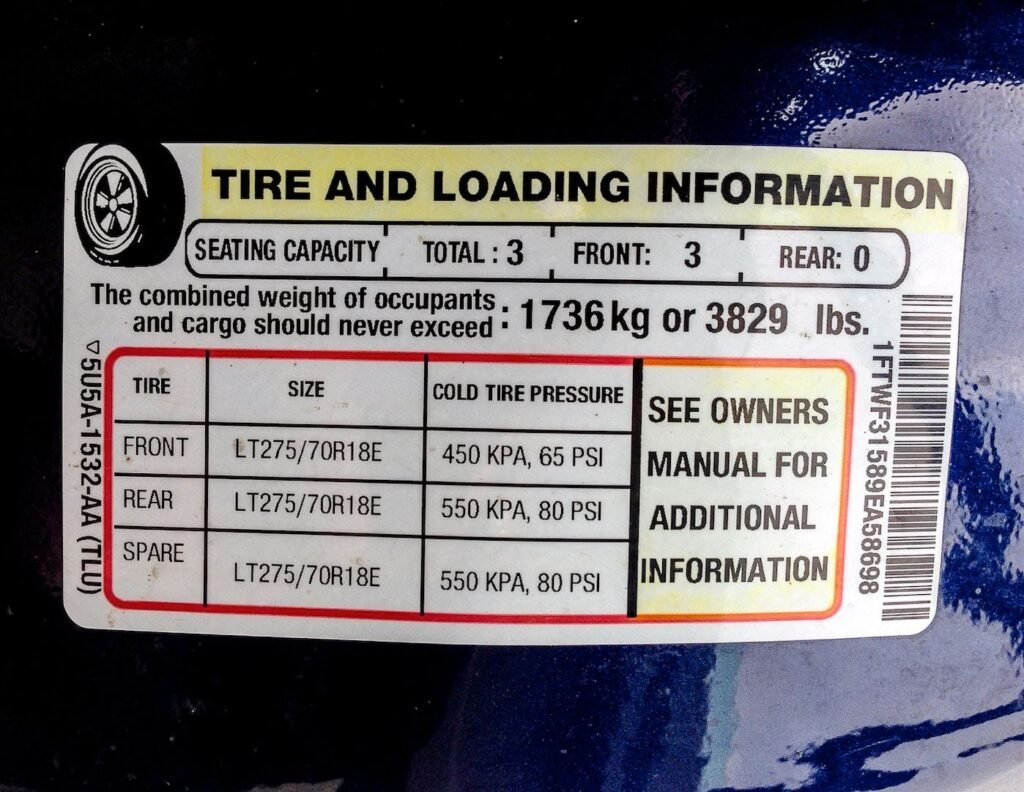
Here’s a simple guide to finding the recommended tire pressures:
- Open the driver’s side door of your vehicle.
- Direct your attention to the sticker affixed to the door jamb.
- Take note of the specified tire pressures listed on the sticker.
By referencing this sticker, you can quickly identify the appropriate tire pressures for your vehicle without any hassle.
SETTING THE PRESSURE
Monitoring your tire pressure is a straightforward task, yet it’s a vital aspect of vehicle maintenance that often gets overlooked by RAV4 owners. It’s crucial to prioritize this simple routine, as it directly impacts your safety and the longevity of your vehicle.
Low tire pressure can stem from various factors, including cold weather, punctures, damaged wheels, worn-out tires, or the passage of time. Driving with insufficient tire pressure poses significant risks, which are essential to be aware of:
- Increased Wear and Tear: Insufficient tire pressure can lead to accelerated and uneven tire wear, reducing the lifespan of your tires.
- Extended Braking Distance: In emergencies, it will take longer to bring your vehicle to a stop due to decreased traction and grip on the road.
- Impaired Handling: Driving with low tire pressure compromises your vehicle’s stability and responsiveness, making maneuvering more challenging, especially during turns.
- Reduced Fuel Efficiency: Operating your RAV4 with underinflated tires can decrease fuel economy, leading to more frequent visits to the gas pump and increased fuel expenses over time.
By regularly monitoring and maintaining proper tire pressure, you ensure your safety on the road and optimize the performance and efficiency of your RAV4. It’s a small yet essential step that can significantly impact your driving experience and vehicle longevity.
Conclusion
Maintaining optimal tire pressure is a fundamental responsibility for every RAV4 owner, contributing significantly to safety and vehicle performance. While the task may seem mundane, its importance cannot be overstated. Neglecting tire pressure can lead to various issues, from increased wear and tear to compromised handling and reduced fuel efficiency.
By prioritizing regular tire pressure checks and adjustments as needed, RAV4 owners can safeguard themselves against avoidable risks and ensure a smoother, more enjoyable driving experience. So, let’s commit to staying vigilant about tire pressure because every PSI counts regarding vehicle maintenance.
FAQS
Why should I check my RAV4’s tire pressure regularly?
Regular tire pressure checks are vital for safety and performance, preventing wear, enhancing handling, and improving fuel efficiency.
How often should I check tire pressure?
Aim for checks every few months, before long trips, or when carrying heavy loads, and always check tires when they are cold for accurate readings.
Can I rely solely on the TPMS warning light?
While helpful, the TPMS light isn’t enough. It signals low pressure only at critical levels, lacking specific readings. Regular manual checks are necessary for thorough tire care.

